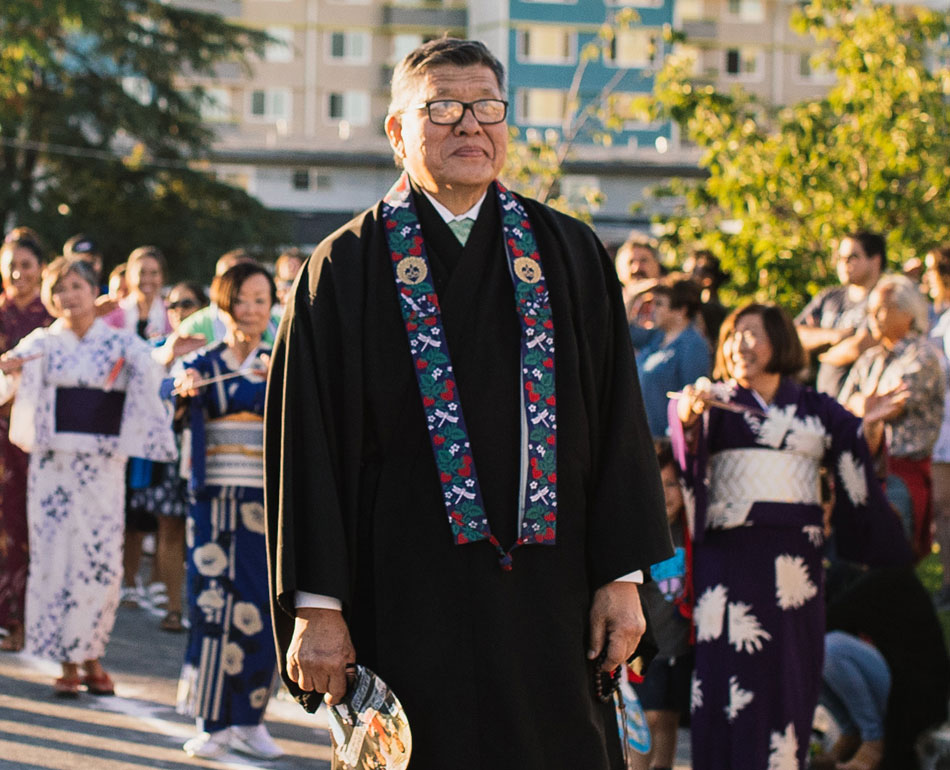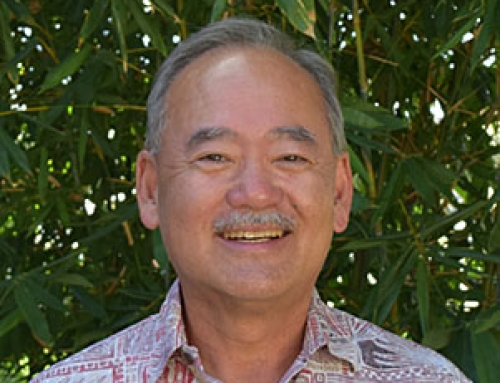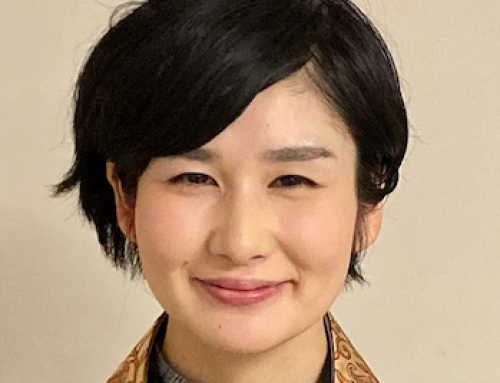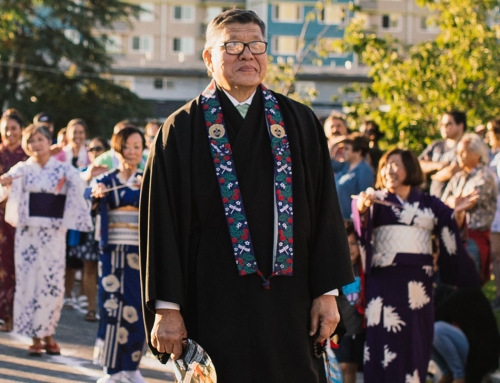G. Sakamoto
Above the onaijin hangs a plaque. On this plaque are three characters. These characters are read from the top, down. The characters are read “kai ho zo”.
When we read Juseige together on Sunday mornings we read these characters. Kai means to open. Ho means Buddhadharma. Zo is storehouse. So kaihozo means to “open the Dharma Storehouse”.
Juseige is one of two gathas that we read regularly that are found in the Larger Pureland sutra. The Larger Pureland Sutra is the over arching myth of Pureland Buddhism. It is the story of the Bodhisattva Dharmakara who is determined to find a way for everyone to be free from difficulties. Dharmakara meets a teacher, the Buddha Lokesvararaja, who helps him understand what he must do. Dharmakara thinks about what Lokesvararaja has said then returns and vows to fulfill his intent to provide a means through which all beings might be free from difficulties. He reaffirms his intent before his teacher the Buddha Lokesvararaja in the form of verse which is Juseige.
In Juseige above the words kaihozo is the phrase “isshu”. Isshu means for the sake of all beings. When we read Juseige we read the words of the Bodhisattva Dharmakara. In these words is the pledge of Dharmakara to open up the Dharma Storehouse for the sake of all beings.
This is an example for us. In Jodo Shinshu we know and acknowledge that we are foolish beings incapable of matching the promise of Dharmakara. Yet we live in this world where we make choices and take action. Regardless of what we do the promise of Dharmakara assures us of the resolution of difficulties. Fulfilling his vows, taken before his teacher the Buddha Lokesvararaja, Dharmakara becomes Amida Buddha. The resolution of difficulties is at the core of the Buddhadharma. That assurance allows us to look at ourselves more openly and carefully.
Our actions, our behavior, is not focused on the practices that cultivate enlightenment rather it is simply engaging the world in a way that affirms life, that acknowledges the other as ourselves. Like Shinran we can acknowledge our limitation to cultivate enlightenment and at the same time live gratefully with the assurance of Amida. Like Shakyamuni, like Dharmakara, we can express our concern for the welfare of all beings as we engage the world.
Dharmakara, Siddhartha Gautama, Shinran they are our examples. Dharmakara and Gautama became Buddha to resolve for themselves and teach others how they too might resolve the difficulties all beings experience. Shinran understood the absolute compassion of Amida that transforms the experience of the beings of samsara into nirvana.
We live in nirvana. We experience nirvana as samsara because of our prejudices. “Isshu kai ho zo”, the vow of the Bodhisattva Dharmakara is to transform the experience of all beings of samsara into nirvana. We benefit from this vow as do all beings.
We are foolish beings assured by Amida Buddha. That assurance allows us to look ever more deeply into our own foolishness. Looking more openly at my foolishness I am grateful for Amida’s assurance. That assurance allows me to engage the world in a way that understands my foolishness and limitations, and yet recognizes the need to affirm life. To behave in a way that does not harm others. To engage the world, as best we can, with kindness and compassion.




